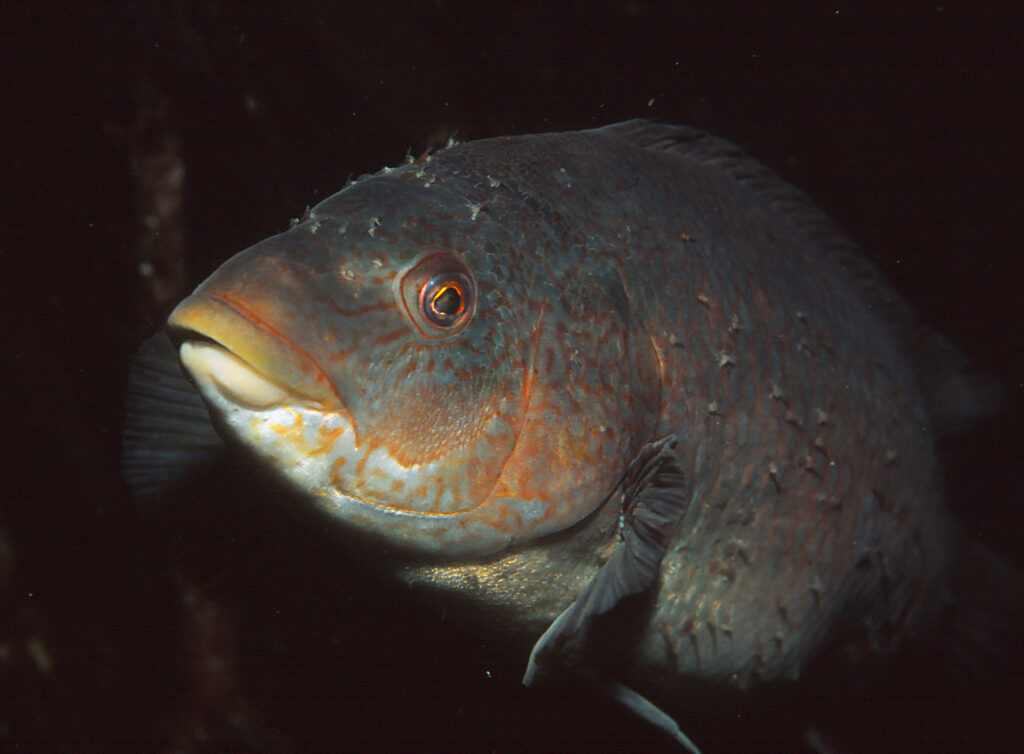Kelp study promises a happier home for cleaner fish

A company that provides cleaner fish hides for fish farms has received a £125,000 funding package from the Seafood Innovation Fund (SIF) to explore the benefits of using natural kelp to provide a more natural environment for the fish.
KelpRing – the name of the company and its product – is a system that mimics wild seaweed habitats, to create a “home from home” in which cleaner fish can thrive, helping them to keep sea lice numbers down in salmon pens.
Supported by the SIF programme, with additional input from the Sustainable Aquaculture Innovation Centre (SAIC), salmon producer Loch Duart, and the University of Stirling’s Institute of Aquaculture, the new research will see KelpRings deployed at one of Loch Duart’s salmon farms for the next 18 months.
Designed as an alternative to artificial seaweed hides typically used on fish farms, KelpRing aims to be as close as possible to the type of environment ballan wrasse and lumpfish – the most common cleaner fish species – would experience in the wild.
A previous feasibility study with Scottish Sea Farms, combined with international research, showed that the introduction of natural kelp on salmon farms can have medicinal properties and a calming effect on cleaner fish, boosting their ability to tackle sea lice.
This latest trial will see Institute of Aquaculture researchers evaluate the impact of KelpRing against current standard conditions, assessing the preference of cleaner fish and mapping behavioural and physiological changes in the cleaner fish population related to their welfare. They will be also looking at cleaner fish efficiency by means of sea lice counts and the health and welfare state of salmon.
The SIF is administered by the Centre for Environment, Fisheries and Aquaculture Science (Cefas) on behalf of the UK Department for Environment, Food and Rural Affairs (DEFRA).
A natural environment
Martin Welch, founder of KelpRing, said: “Cleaner fish are naturally drawn to seaweed forests and by adding kelp hides to salmon pens, it allows the fish to act as they would in the wild, in their natural habitat. Wrasse and lumpfish can live a long and healthy life of up to 25 years if the conditions are right, and measures to enhance their wellbeing can only support their ability to treat sea lice.
“The KelpRing is a lightweight system which can be deployed in various sizes from one to nine meters in diameter, using a mix of naturally seeded and lab-grown kelp. So far, the aquaculture sector has been incredibly positive about the prospects of using the system and we’re hopeful that the results from this latest trial will prove our hypothesis, with the kelp having a positive impact on Loch Duart’s cleaner fish population and a reduction in sea lice numbers.”
As well as enhancing cleaner fish wellbeing, using kelp to improve their delousing capabilities could have a range of benefits for salmon producers and the environment. The wider deployment of KelpRings could lead to less reliance on expensive current treatment methods for sea lice, such as the use of pharmaceuticals and techniques that involve handling salmon, the company said.
Eliminating the need for additional treatment, including the production processes and boats used, could also reduce the overall carbon footprint of farms.
Sarah Riddle, director of innovation & engagement at SAIC, said: “Fish health and wellbeing is one of the top priorities for the sector as it continues to target sustainable growth. Tools that mimic natural habitats are known to improve the health, welfare, and productivity of cleaner fish. For that reason, it is great to see techniques being trialled to bring the environment of salmon farms closer to what would be found in the wild.
“Aquaculture’s focus on cleaner fish continues to gain momentum, with valuable research developments helping to transform the wider approach to sea lice management. Ballan wrasse and lumpfish are crucial to future-proofing the sector, with collaborative research continuing to find new ways of helping them to thrive.”
Lewis Bennett, cleaner fish manager at Loch Duart Ltd, added: “The use of cleaner fish, in my view, is the biggest innovation at Loch Duart. They play a vital and valuable role in the business, where they contribute to the fish health strategy. They are also a form of multitrophic farming incorporated into our salmon operations, where they keep our salmon free of sea lice, and we work to meet all of their requirements.
“Being able to express their natural grazing behaviour requires a range of factors to be met, such as having a habitat or structure in close proximity. We currently use artificial kelp for this, but being able to provide our wrasse with a more appropriate habitat should create a happier fish population and would reduce the need for artificial products. I am very keen to see the results on fish behaviour but also the operational benefits of a habitat that doesn’t need cleaning or regular removal from the pen. As we have seen at Loch Duart across a range of factors, a natural option is always superior.”

Ballan wrasse, one of the species used as a cleaner fish

